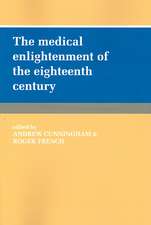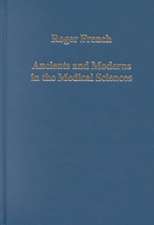The Great Pox: The French Disease in Renaissance Europe
Autor Jon Arrizabalaga, John Henderson, Roger Frenchen Limba Engleză Paperback – 2 sep 2014
One hundred and fifty years after the Black Death killed a third of the population of Western Europe, a new plague swept across the continent. The Great Pox—commonly known as the French disease—brought a different kind of horror: instead of killing its victims rapidly, it endured in their bodies for years, causing acute pain, disfigurement, and ultimately an agonizing death.
In this new study, three experts explore the impact of the new plague and society's reaction to its challenge. Using a range of contemporary sources, from the archives of charitable and sanitary institutions that coped with the sick to the medical tracts of those who sought to cure it, they provide the first detailed account of the experience of the disease across Renaissance Italy as well as in France and Germany.
The authors analyze the symptoms of the Great Pox and the identity of patients, richly documented in the records of the massive hospital for "incurables" established in early sixteenth-century Rome. They show how it challenged accepted medical theory and practice and provoked public disputations among university teachers. And at the most practical level, they reveal the plight of its victims at all levels of society, from ecclesiastical lords to the diseased poor who begged in the streets. Examining a range of contexts from princely courts and republics to university faculties, confraternities, and hospitals, the authors argue powerfully for a historical understanding of the Great Pox based on contemporary perceptions rather than a retrospective diagnosis of what later generations came to know as "syphilis."
In this new study, three experts explore the impact of the new plague and society's reaction to its challenge. Using a range of contemporary sources, from the archives of charitable and sanitary institutions that coped with the sick to the medical tracts of those who sought to cure it, they provide the first detailed account of the experience of the disease across Renaissance Italy as well as in France and Germany.
The authors analyze the symptoms of the Great Pox and the identity of patients, richly documented in the records of the massive hospital for "incurables" established in early sixteenth-century Rome. They show how it challenged accepted medical theory and practice and provoked public disputations among university teachers. And at the most practical level, they reveal the plight of its victims at all levels of society, from ecclesiastical lords to the diseased poor who begged in the streets. Examining a range of contexts from princely courts and republics to university faculties, confraternities, and hospitals, the authors argue powerfully for a historical understanding of the Great Pox based on contemporary perceptions rather than a retrospective diagnosis of what later generations came to know as "syphilis."
Preț: 351.84 lei
Nou
Puncte Express: 528
Preț estimativ în valută:
67.33€ • 70.04$ • 55.59£
67.33€ • 70.04$ • 55.59£
Carte tipărită la comandă
Livrare economică 14-28 aprilie
Preluare comenzi: 021 569.72.76
Specificații
ISBN-13: 9780300213171
ISBN-10: 0300213174
Pagini: 368
Ilustrații: 34 b-w illus.
Dimensiuni: 156 x 235 x 25 mm
Greutate: 0.52 kg
Editura: Yale University Press
Colecția Yale University Press
ISBN-10: 0300213174
Pagini: 368
Ilustrații: 34 b-w illus.
Dimensiuni: 156 x 235 x 25 mm
Greutate: 0.52 kg
Editura: Yale University Press
Colecția Yale University Press
Notă biografică
Jon Arrizabalaga is researcher in the history of science at the Consejo Superior de Investigaciones Cientificas, Barcelona. John Henderson is senior research fellow at the Wellcome Institute, Cambridge. Roger French is university lecturer in the history of medicine, Cambridge.




























